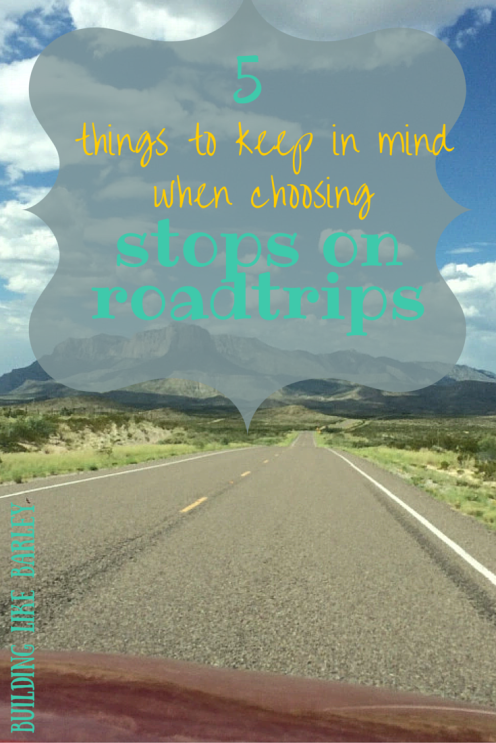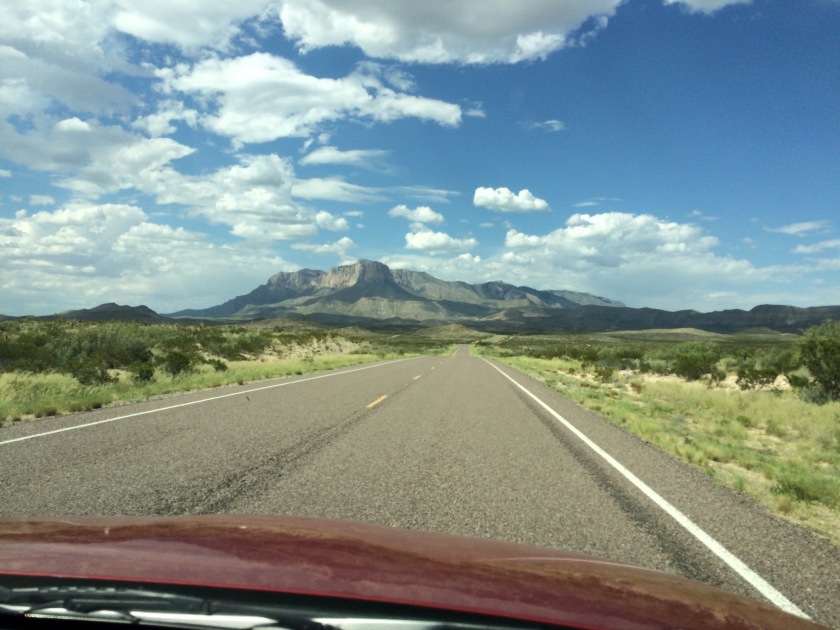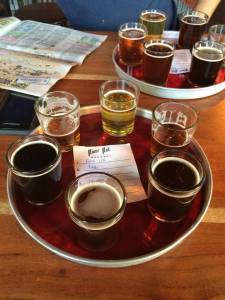
Wes comes from a roadtrip family. To him, a “day trip” can be to somewhere like, 5 hours away, with still a full day of sightseeing before a drive home… Me? Not so much. But, he LOVES driving, like really loves it, so it works for us. We try to do roadtrips, two weeks long, and camp along the way. These tips are pretty specific to camping roadtrips, but #5 applies to nearly all long-haul roadtrips. These are just a few things that we really didn’t take into account when planning, but definitely could’ve made a huge difference in a) where we stopped, and b) what we packed.
Get plannin’!

1. Showers
16 days, 101degree heat… TWO showers. That’s the biggest thing most people remember about our 2015 summer roadtrip, because it is a bit shocking. So just go ahead and trust me here- if you’re going the camping route, make sure to check if your campground has shower access! Since we were in the desert (in the summer), most campgrounds didn’t have shower facilities. Some parks will have several campgrounds, and some will have showers and some won’t. A lot times, you can find tips on local places to shower (check TripAdvisor for these sorts of tips); but for this trip, were in the middle of nowhere, so there were no options nearby. We don’t need to shower everyday, but especially if you’ll be covering yourself with sunscreen and bug spray, in addition to sweat… you’ll want the option more often than not. We’ve made it a rule that a shower facility must be planned every 3-4 days during any and all future trips, whether that’s a specifically-planned campground with showers, or even a hotel/AirBnB.
Now, a note: many truck stops will have shower facilities. I have been to some very nice and clean truck stops. I have also been to some terrifyingly disgusting and creepy truck stops. At a pretty decent truck stop this past summer, as I sat stewing in a week’s worth of sludge, I seriously considered whether or not to bite the bullet. Combined with car rides averaging 7 hours, I was cheesy, to say the least. My advice is, do what’s comfortable, and be smart. I’m not saying I’ll never use a truck stop bathroom, but I’m saying that I’ll likely push a little more for mindfulness in planning!
2. Shade/time of year
Shade (or lack thereof) was not something we really thought about when planning this roadtrip through southern Texas in the middle of August. Yeah… not many trees in the desert! And the few campsites at Big Bend that had some sort of covering were claimed by the time we rolled in. So I would suggest being mindful of this—we saw many tarps strung up in creative ways, whether people used their cars, cacti, or even brought their own tall poles to twist into the hard ground… but we were pretty exposed when we were at the campsite. One savior: our hammock. This small Eno hammock fits nicely in our pack, and we strung it up between whatever trees we could so that we had a makeshift nap place at our fingertips. One of the sweetest (and most practical) gifts Wes has ever gotten me, as I always talked about wanting a hammock.
3. Liquor laws
Obviously doesn’t apply to everyone, but something we definitely regretted not thinking of during our travels! We love trying out local beers, and so usually plan on getting some beer to bring to the campsite as we’re getting closer to our destination, to crack open after camp is set up. What we didn’t factor in is that liquor laws vary not only by state, but by county as well. If you’re like us and want to kick back with a cold one after a long day driving or hiking or whatever, look up the local liquor laws at your destination to ensure that’s doable! At Big Bend, you can’t buy alcohol on Sundays -but they have a ton of other weird and random laws to keep in mind. Mammoth Cave is situated in a historically dry county that only recently started to sell. Carlsbad, New Mexico doesn’t sell alcohol, so if you’re camping at nearby Guadalupe Mountains, it’s quite the drive into NM to find anything!
Also a good tip- if you’re into local beer like us, check out any breweries on your route and confirm hours before your trip. Cell service was minimal most of our journey, and even then, some breweries only had hours posted on Google, which proved extremely unreliable. We’ll be double checking everything before we head out this summer! (Related: don’t ever go to Marfa.)

4. Drinking water
To state the obvious, the desert is a dry place. But it’s important to keep in mind wherever you go: there’s no guarantee that there will be water, or that it’s potable. Make sure to do your research ahead of time, and be conservative in what water you take if there are options to save water! We stopped in Hot Springs, Arkansas before we made our way into the desert for a week. Hot Springs has an abundance of water for free throughout the city at public taps, so we filled everything we had before making our way into Texas. We filled two 5-gallon jugs, our 2-liter pack bladders, and the 10 or so water bottles we had with us. We only had to fill the 2 liter bladders on the last day in the desert.
You’ll also want to ensure that if there is water, that it’s potable. We go to Isle au Haut in Acadia in Maine every year. In 2014, the water from the tap just outside the campground was good to go. In 2015, it was undrinkable. We hadn’t checked ahead to make sure the water would be safe, because we’d assumed it would be fine since we’d been there the year before. But the crazy weather saw a rise in mercury in groundwater, so thankfully we always have tablets in our packs. There are lots of different types of filtration systems or tablets to ensure you can make drinking water out of nearly any water source. This summer, we’re backcountry camping in Isle Royale and Voyageurs, so we’ll need to bring our water with us as well as filtration systems.
5. Time in car and of arrival
Now, this is a crucial piece where Wes and I disagree. To him, a “long day” in the car is anything over 12 hours. Seriously. For me, 7 is a stretch. So decide for yourself and talk with any travel companions about what’s reasonable for you, and how you’ll make it work. For me, we’ll need to plan some sort of stop to stretch our legs. If there isn’t a historic site or brewery along the drive, than I factor in a stop for a real lunch or a scenic walk or SOMETHING. Make sure to download new music or audiobooks, create playlists, or lineup podcasts. We also read a lot of Trivial Pursuit cards to each other. Sometimes, there’s just not much to look at along the way, so finding ways to stay entertained is crucial.
It’s also important to keep in mind your time of arrival- if you’ll be camping and arriving after dark, make sure to have light sources at the ready for easy set up as soon as you pull in (shout out to our headlamps!). We arrived after dark a few times, and the deal was I would make a fire and get dinner started while Wes set up camp.
A long roadtrip (and especially camping along the way) isn’t for everyone, but it can be ridiculously fun. Keeping these tips in mind will help everything run smoothly!
Needless to say, I think I’ll roadtrip with him again ☺

Can I third wheel sometime? Or Barley and I can just hang out
LikeLiked by 1 person